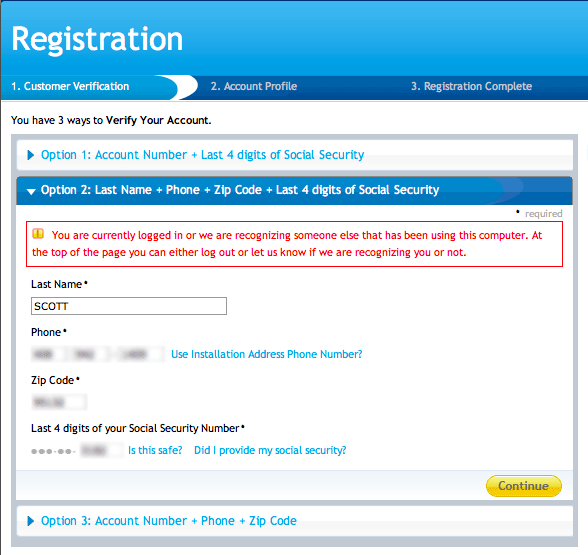So after logging in to the DirecTV site and digging around in the left nav I found the SuperFan (also called SuperCast :-) Login link. Here is the page presented to me:

- I am logged in (A)
- It recognizes me as a Registered DTV customer (B)
- But wait, it is asking me if I am registered (C)
- Does that mean I am not registered with the SuperFan service? Because it surely knows I am registered (since I am logged in)
- Am I a Sunday Ticket SuperFan subscriber? Heck, I am logged in-- you don't know? Yes of course I am.
- Hmmm... maybe I need to "Register" my DTV account with the SuperFan service? (D)
- Its also asking me if I am even a DirectTV customer. Huh?

You are currently logged in or we are recognizing someone else that has been using this computer. At the top of the page you can either log out or let us know if we are recognizing you or not.
Huh?Ok, so my problem is I was reading too much in the first page.
Notice the message "Not a DirecTV customer" (E) and the "Order Now" (F).
Even though I am logged in (and thus registered) and have SuperCast/SuperFan the rest of the page does not know if I am registered, if I have SuperCast or even if I have DirectTV!
What is even more frustrating is after calling the customer support line I suggested they put a note in for the web team to fix this incorrect messaging. I got a "cold shoulder" response and it was obvious that DirecTV did not have a process for this to happen nor did the customer support person care in the least that this page creates a lot of unnecessary calls to their call center.
At Netflix we try to listen carefully to our call center. One recent example was our reps telling us (in a focus group) that they were getting frequent calls with users not being able to find the Member Login link when they come to the Netflix site logged out. The fix? Real simple. Enlarge the "Member Login" link and change the background making this easier to find. The good news-- It worked!

